Student Research Spotlights
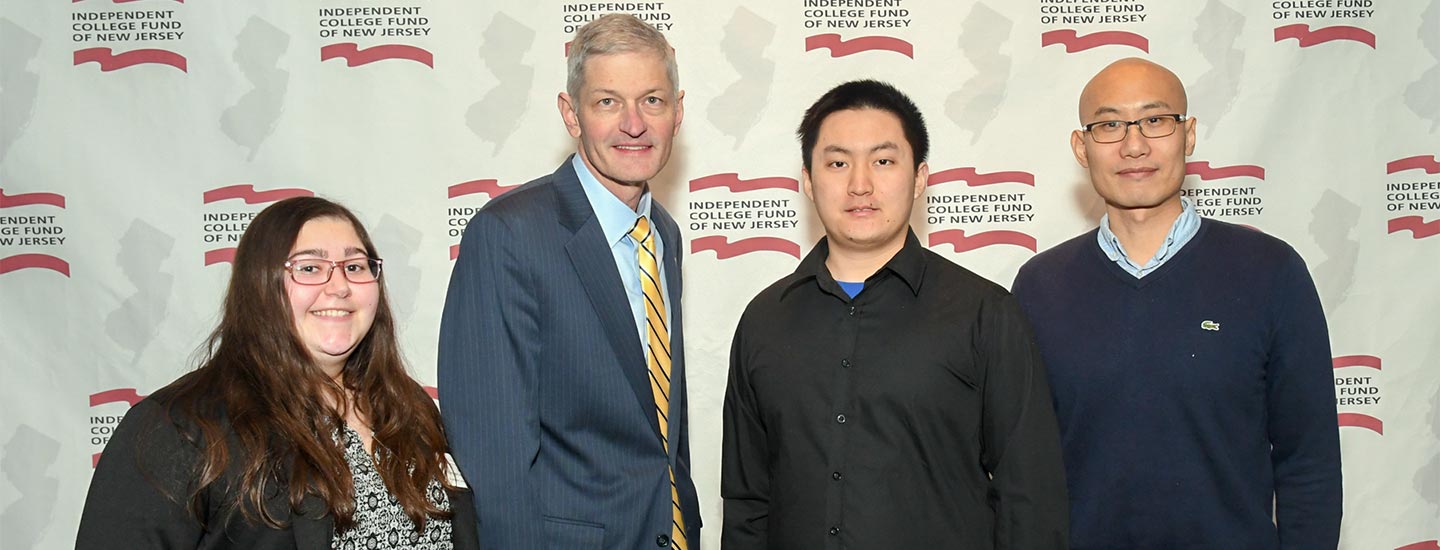
Hailey Handerhan ’19
Major: Biology
Faculty Advisor: Jean Parry, Ph.D., Assistant Professor of Biology
Research Abstract
Presented at the Undergraduate Research Symposium, Independent College Fund of New Jersey
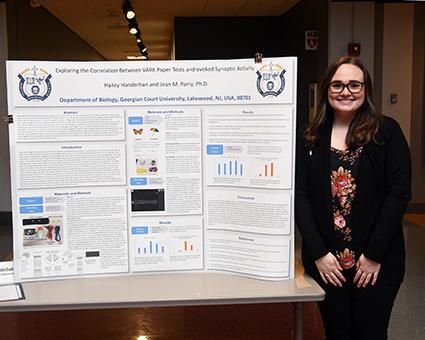
Research into Understanding the Synaptic Plasticity and Learning Strategies
There are four broad types of learning strategies; visual, aural, verbal, and kinesthetic. This research examines the four main types of learning styles to determine which of these modes of learning will more actively stimulate the average college student, therefore enhancing their ability to learn. A cohort of at least 10 college students will be tested on their synaptic plasticity via an Electrocephalogram (EEG); Heart and Brain SpikerShield device. Each student will first be given a VARK test, which will be used as a reference point for identifying an optimal learning strategy, and those results will be supported or refuted by comparison to an EEG recording taken during a simple language lesson taught in each of the four formats (visual, aural, reading, kinesthetic). A proof of concept analysis has been completed, and student data collection is currently underway.
Christina Fontana ’19
Majors: Mathematics and K-12 Education
Qiaoli He ’18
Major: Mathematics
Faculty Advisor: Lei Cao, Ph.D., Assistant Professor of Mathematics
Research Abstract
Presented at the Undergraduate Research Symposium, Independent College Fund of New Jersey
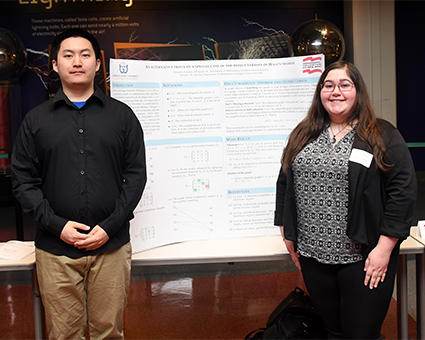
An Alternating Proof of a Special Case of the Defect Version of Hall’s Marriage Theorem
Hall’s marriage theorem is a powerful result in combinatorics that specifies when distinct elements can be chosen from a collection of overlapping finite sets. It is equivalent to several beautiful theorems in combinatorics, including the Ko¨nig-Egerva´ry theorem, Menger’s theorem the max-flow min-cut theorem and the Birkhoff-Von Neumann theorem. Hall’s theorem has a defect version which is a generalization of the theorem with respect to d, the deficiency of a bipartite graph with bipartite sets U and V, defined as the smallest integer such that there exist min{|U|,|V|}−d independent edges, where |U|and |V| denote the cardinalities of U and V respectively. We prove a special case of the defect version when U and V have the same cardinality. The tool we are using essentially is the minimal doubly stochastic completion of doubly substochastic matrices through which one can extend a binary matrix without total support to a binary matrix with total support by adding minimum number of rows and columns. We made connection between doubly (sub)stochastic matrices and bipartite graphs and show that the minimality of the doubly stochastic completion implies the special case of the defect version of Hall’s marriage theorem.
Liam J. McGlaughlin ’18
Major: Chemistry
Faculty Advisor: Prasad Lakkaraju, Ph.D., Professor of Chemistry & Biochemistry
Research Abstract
Presented at the Undergraduate Research Symposium, Independent College Fund of New Jersey
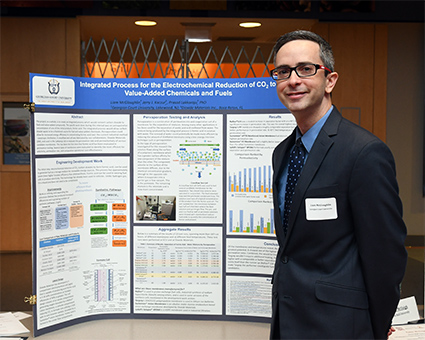
Integrated Process for Electrochemical Reduction of CO2 to Value-Added Chemicals and Fuels
The project as a whole is to create an integrated process which would convert carbon dioxide to fuels and value added compounds. The specific work done during this interval was on pervaporative concentration of the initial product, formic acid. The integrated process could allow carbon dioxide waste to be a source of fuel and value added chemicals. Pervaporation could allow for increased energy efficiency in concentration over current methods (azeotropic distillation) if a suitable membrane was identified. A crossflow test chamber was fabricated by our collaborators (Dioxide Materials, Boca Raton, FL) and used in the Lakkaraju lab to test the permeation rate and permselectivity of various candidate membranes. Of the membranes tested the most efficient for selectivity, permeation rate, and operational cost effectiveness were identified.
Jacob Riedel ’18
Major: Biology
Faculty Advisor: Louise Wootton, Ph.D., Professor of Biology and Chair of the Department of Biology
Research Abstract
Presented at the Undergraduate Research Symposium, Independent College Fund of New Jersey
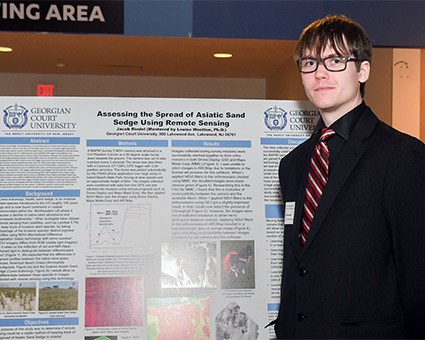
Assessing the Spread of Asiatic Sand Sedge Using Remote Sensing
Asiatic Sand Sedge, Carex kobomugi, is an invasive species of dune plant found in coastal communities such as in the dunes of the New Jersey Coast. It competes aggressively with native plant species, such as American Beach Grass, Ammophila breviligulata. Attempts were made to keep track of C. kobomugi by using handheld GPS loggers and walking to the locations of the invasive grass to keep track of the populations. However, this method was limited as the sedge often grows in inaccessible areas. To counter this, an UAV (unmanned aerial vehicle, commonly known as a “drone”) equipped with an NDVI (Normalized Difference Vegetation Index) camera and a GPS logger was used to fly over areas of the dunes at the southern end of Island Beach State Park, NJ. NDVI technology is used mostly for determining crop density by measuring the amount of chlorophyll, or greenness, of an image. We had hoped to use it to differentiate native and invasive grasses by their different pigment compositions. The images collected were geotagged and stitched into mosaics to create large maps of the dunes. Post-processing filters were applied to the images using various software and online services such as ARCMap, Drone Deploy and Maps Made Easy. Unfortunately, I was unable to differentiate between the native and invasive grasses using the images I collected because the images created using the model of camera we had available were not compatible with the software I had available to assess the differences in pigment profiles between the two species. A different model of camera will need to be purchased and mounted on the drone in order to complete this project.

